The burning of Osokorky: Why Kyiv residents are fighting for a patch of wilderness on the outskirts of the capital

Olena Vakarenko lives in Poznyaky, a densely-populated residential district of Kyiv made up of high-rise apartment blocks.
Before that, Olena lived in the Teremky district, and got used to having Holosiivskyi Forest nearby - a full-fledged national park with centuries-old oaks right in the middle of the big city.
There’s a city park near her new home too, but it looks like an overgrown alleyway by comparison.
Perhaps because of this lack of wildlife, a year earlier, she set up a vegetable garden - a box outside her window - to grow all sorts of greens.
What she did not expect to see in her garden one day was a pair of small falcons, who had made a little nest and laid three eggs in it.
"Only glass separates us from them," Olena's husband, Oleh Malchenko, wrote on Facebook in the spring of 2022. - "We have turned into voyeurists, because now, with our eyes wide open, we watch these beautiful birds: how they hatch, protect, feed, communicate with us and with each other; how she swears at her husband, and he, with a grin, is silent, and then grumbles something and goes off to catch a delicious mouse; how she gets wet in the rain and makes a funny sound and falls asleep in the sun.
It is not easy to see a falcon in Kyiv. You need to be familiar with birds’ habitats and, of course, have good eyesight. But if you learn the call of these birds, you may one day realise that they are soaring over your district. Perched upon the "man-made cliffs" that are the city’s buildings, they make their nests. But to hunt for mice, lizards and large insects, they fly away to nearby natural areas that have not yet been swallowed up by the city.
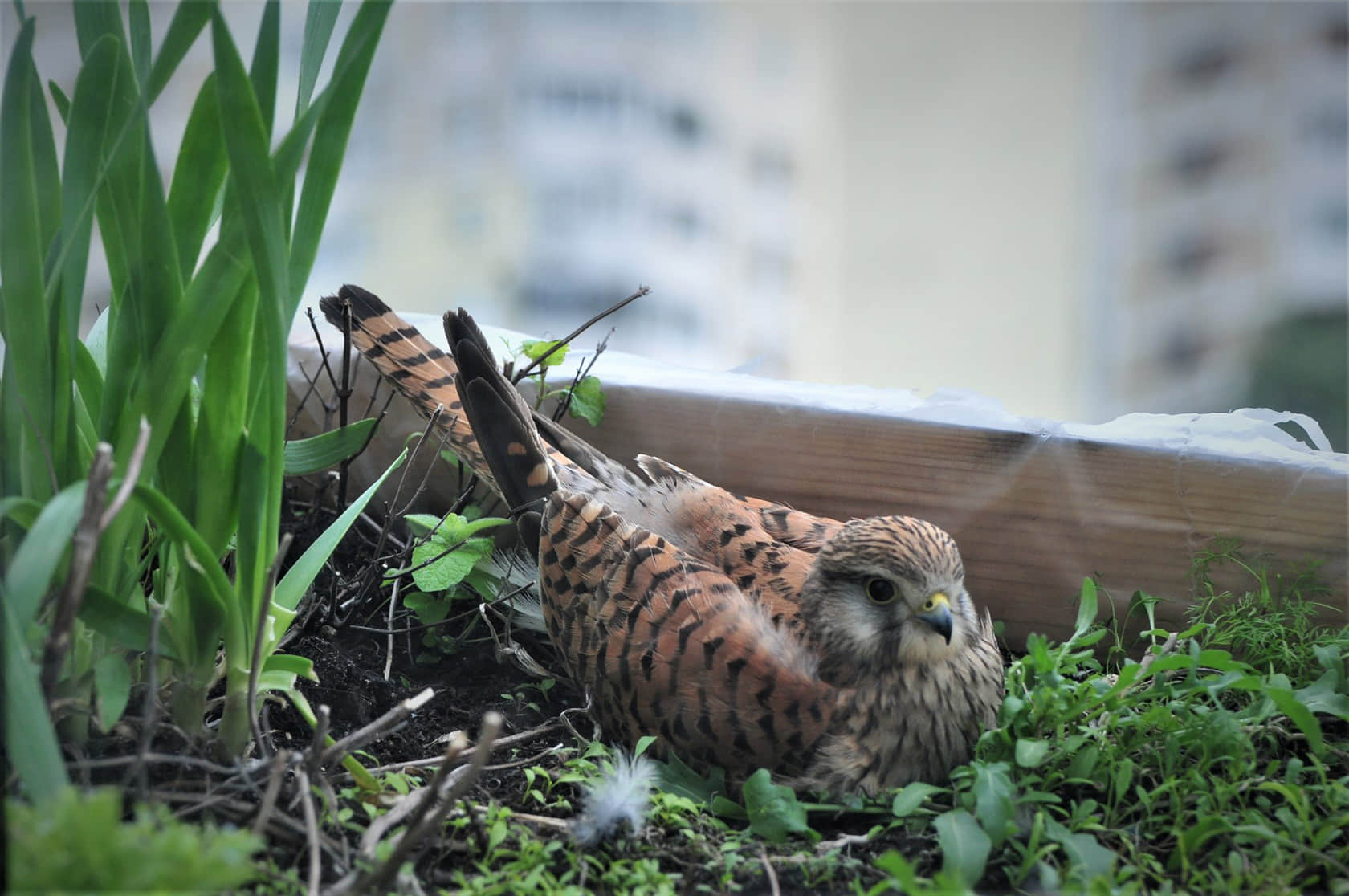
Not far from Poznyaky, such natural areas still exist - in recent years, the area has been unofficially dubbed the Osokorky Ecopark, by activists seeking to have it granted official recognition as a protected area.
The story of the Osokorky Ecopark is a multifaceted one, of continual disputes between several different parties with differing interests. There are endless lawsuits over land ownership. Buyers who purchased land with promises of being able to build their own homes don’t want to be cheated out of that privilege at the last minute. And urban planners debate whether keeping the land undeveloped or not would be most beneficial for their visions of a modern, comfortable city.
This time, Ukrayinska Pravda discusses why Kyiv cannot afford to lose the biodiversity of the Osokorky Ecopark, and about the consequences of the wildfire that burned there, which caused quite a stir a few days ago.
The floodplain
In the car park of a large hypermarket on the south-eastern outskirts of Kyiv, I met Oleksandr Pylypenko and his colleagues from the Ecopark Osokorky NGO, Natalya Chernyshova and Yurii Solobai. Oleksandr is taking us for a ride in his SUV to show us what the Ecopark’s natural environment looks like and how people are currently interacting with the land.
Soon, the big city is behind us, and we are travelling through the forest on a dirt road along the shores of Lake Tyahle.
To the right of us is a fenced-off area. By some accounts, access is forbidden due to the area having been mined, in anticipation of the invading Russians marching on Kyiv. Strangely, the alleged mines haven’t deterred the Stolitsa Group from already commencing the construction of high-rise buildings in the area.
Stolitsa Group is a Ukrainian-Lithuanian development company co-founded by businesswoman Vladyslava Molchanova, who is affiliated with the Batkivshchyna political party.
According to open sources, as of 2021, the company was the largest developer of residential real estate in Kyiv.
One of the projects the company is currently executing is the H2O residential complex, located next to Lake Tyahle, which is part of the landscape reserve of the same name in southeastern Kyiv.
It is expected that part of the proceeds from the sale of apartments in the H2O residential complex will be used to complete the reconstruction of the former facilities of the bankrupt Arkada bank.
The project is opposed by activists who believe that the residential complex will cause irreparable damage to the environment and increase the burden on the city's transport infrastructure.
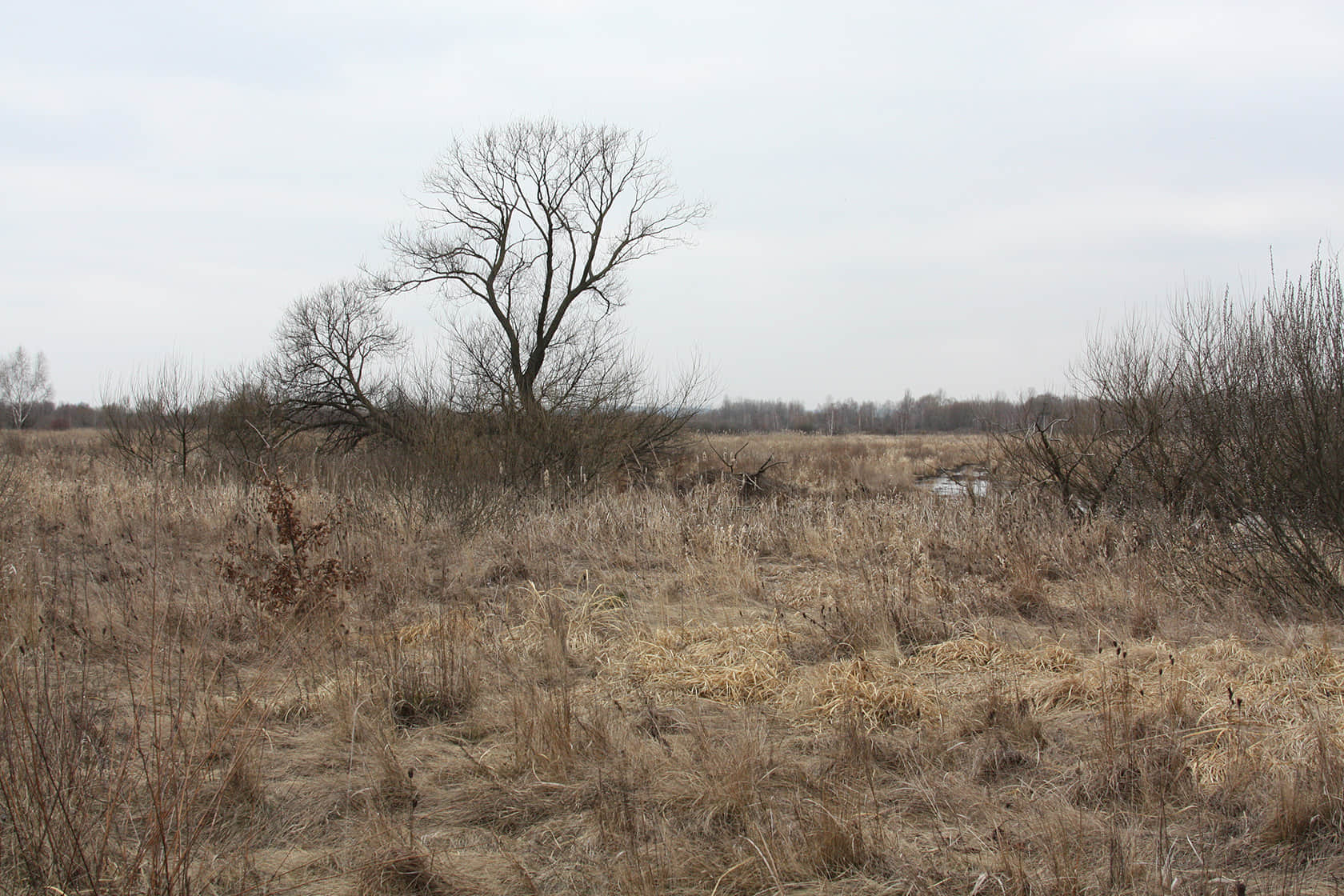
Exiting the forest, we continue into a meadow and stop in front of a puddle, which seems too deep for even our SUV to cross.
The surrounding lowlands are swamped by spring meltwater. This year, there is a lot of water, albeit less than last year, when many Kyiv residents and suburbanites suddenly learned that the Dnipro and Desna rivers flood in the spring, oblivious to the desires of riverside property developers. Oleksandr says that the flooding in the meadows can persist until June.
A fire has been announced
Activists who defend the Osokorky Ecopark or at least "sympathise" with the cause have a group chat on Telegram. There are a lot of people there; almost anyone can join. Every so often, a troll posts a false message.
Natalya says that over the past few weeks, several times one of the chat participants reported a fire in the Ecopark. And each time it was a false alarm.
But after these strange "announcements", on the evening of 5 March, the meadows really caught fire. The firefighters were joined by activists, including Oleksandr and Natalya. They say that it was difficult to know what to do in the dark, and the only way to get to the fire was to wade through the swamp.
Fortunately, Oleksandr had fishing waders, i.e. waterproof trousers with boots. And the firefighters reached the fire with a Bohun, a specialised amphibious all-terrain vehicle with huge wheels.
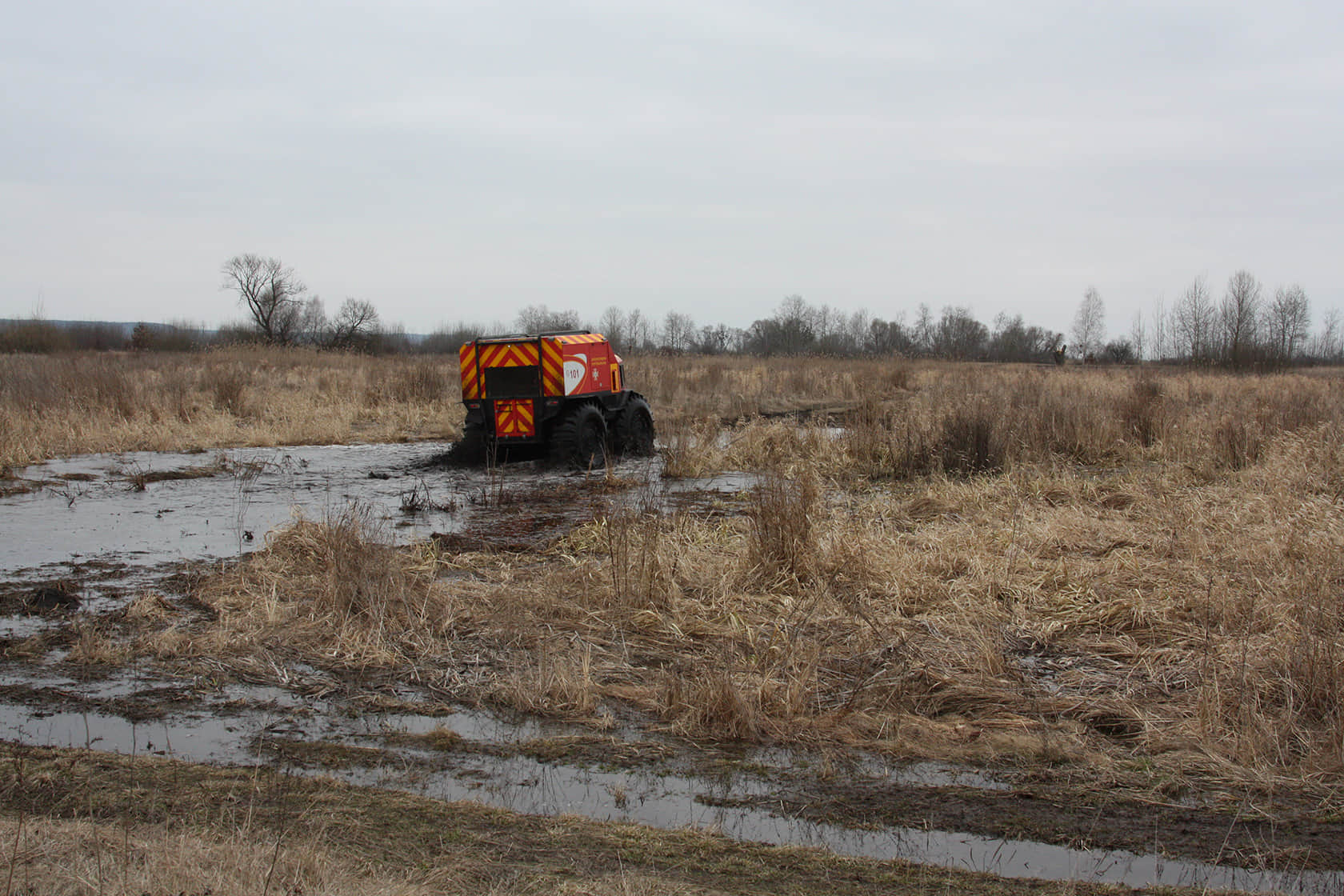
The activists brought buckets with them to pour water on the fire, and Natalya even had a fire extinguisher. The firefighters fought the grass fire with fire blankets, and where fire trucks could not get close to the flames, extended fire hoses.
By midnight, the fire had been put out by the joint efforts of the activists and professional firefighters.
Siberian irises and orchids
At the very beginning of the calendar spring - even in an age where climate change has pushed back the beginning of actual spring - the natural environment of the Ecopark has not yet woken up, and is not yet ready to showcase its beauty. In the middle of the dry grass, perennial plants grow, wilting at the top. Oleksandr picks one of them and says: "So these are Siberian Irises."
In less than three months, the blue and purple flowers will cover everything around. At that time, it might even seem that they were included in the Red Data Book because of some mistake or strange whim of botanists.
In less than three months, the plants will gain blue and purple flowers, blooming so abundantly that you might even question why they were included on the Red List of endangered species. But make no mistake; Siberian Irises are only locally common on natural meadows such as this one. Once those meadows turn into farm fields or grazing land or get built over, the habitat suitable for Siberian Irises diminishes.
That is why we need to protect not only individual species of plants and animals, but the ecosystems in which they live.

Another Red Listed plant that blooms here in May is the orchid Dactylorhiza incarnata. There are also species that are officially classified as locally rare in Kyiv.
What is interesting is that even though invasive species like the goldenrod and ragweed have reached this area, they have taken root less prolifically than in many protected forests and steppes, because it is human disturbance that paves the way for the growth of invasives - robust ecosystems are less susceptible.
The aftermath of the fire
At some point, the hum of a motor is heard from the far side of the meadows. A red and yellow Bohun wades towards us through the puddles.
It turns out that the public - i.e. the representatives of the NGO campaigning for official recognition of the Ecopark - were invited to an offsite meeting by the head of the Environmental Protection Department of the Kyiv City State Administration, Oleksandr Voznyi, and he sent a vehicle to pick them up.
The Bohun takes us to the site of the meeting, where we can observe firsthand the consequences of the recent fire. This is the place where dry grass had burned. This fire was likely far less damaging than it could have been, as it occurred before plants had really begun to revive after winter.
And there are two sides to every coin - as Ukrainska Pravda previously discussed, there are even proposals to deliberately set controlled fires in meadowlands, which can remove shrubs and trees that do not belong in the ecosystem. They also clean out dead grass, just like grazing animals do where they exist.
Obviously, such burns should be carried out by professional conservationists, and they should strictly adhere to the seasonal windows where controlled burns are most beneficial and least likely to escalate into damaging fires.
The problem is that it was not only the grasslands that caught fire on 5 March, but also dried-out areas of marshland. Activists say that fires in the latter type of habitat are devastating, and will not bode well for its biodiversity.
"Any birdwatcher will agree that there will be no birds there for a long time after such a fire," assures Oleksandr Pylypenko.
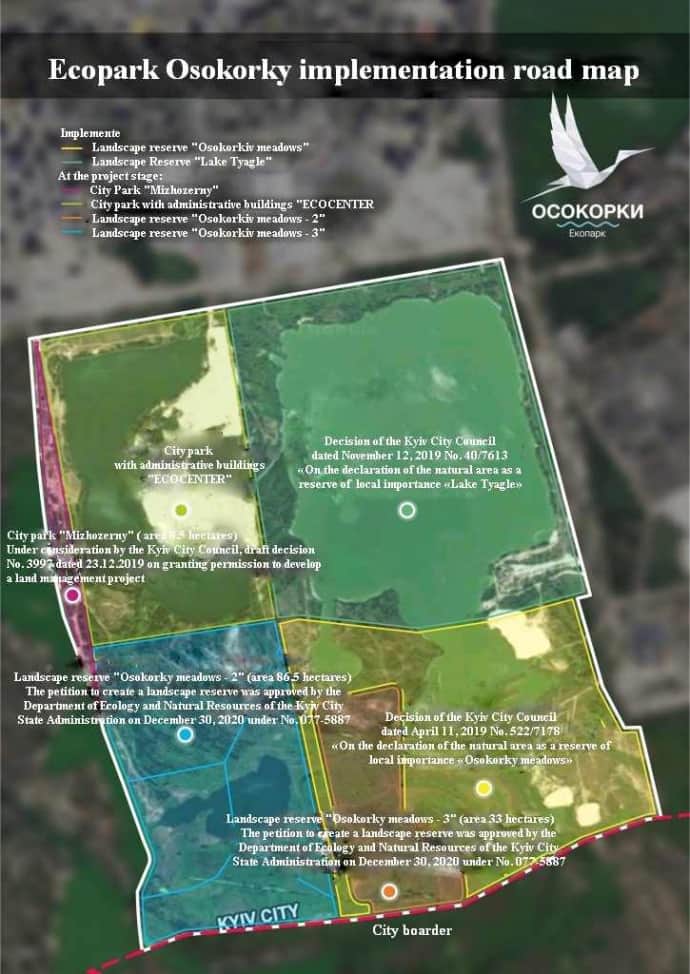
Home to a hundred species of birds
Speaking of birdwatchers, these places are a real paradise for them. And this paradise is located right within the administrative boundaries of the country’s largest city.
Mykola Prychepa, who has a PhD in Biology and is a researcher at the Institute of Hydrobiology of the National Academy of Sciences of Ukraine, has been conducting research in the Osokorkivska floodplain for several years in a row, with a particular focus on birds.
Prychypa says that the Dnipro migration corridor runs through this area. Keep in mind that birds migrating from one place to another don’t draw the shortest straight line on a map and follow that route, or flutter around randomly until they get there - instead they take into account the terrain, crossing sea straits at their narrowest points, avoiding tiring flights over mountains where possible, and following river valleys.
And this means that human activity can interfere with bird migrations, such as in the Borzhava Valley in Zakarpattia, where a wind farm has been built.
More than a hundred species of birds can be found in the Ecopark, many of which are listed on the Ukrainian Red List and protected under international agreements, including the Bonn and Bern Conventions.
Here, you can see rare birds such as the black tailed godwit (limosa limosa). It and other godwits are in the same situation as the Siberian Irises: they need meadows and marshes with appropriate conditions to thrive. When humans destroy these ecosystems, such as by building on them, the birds also disappear.
In recent years, the Osokorky floodplain has been home to a rare duck, the gadwall (Mareca strepera), which is also protected at the national and international levels. In addition, you can see birds of prey, such as the snake eagle, hen harrier, black kite and others.
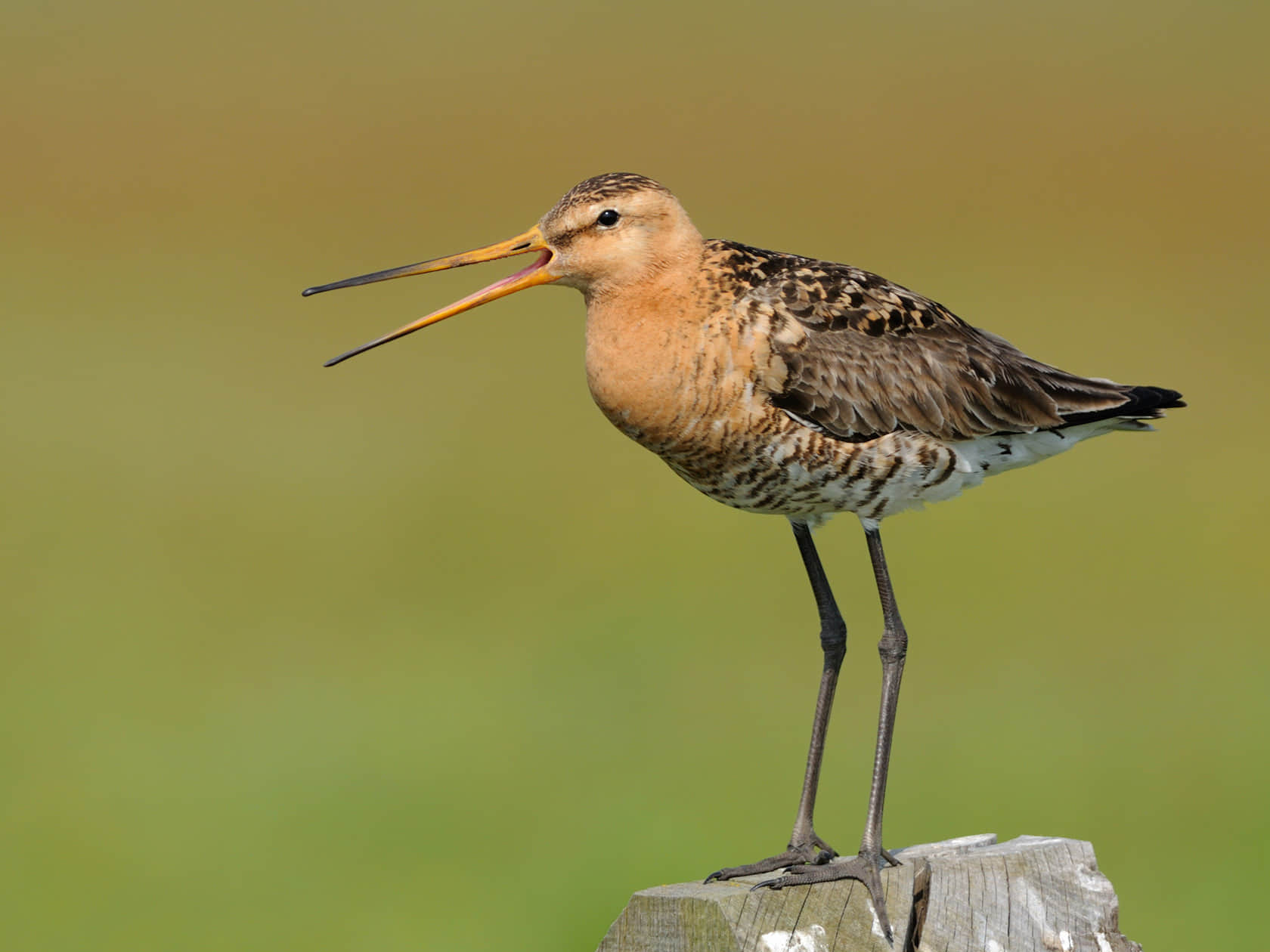
Water
From the point of view of nature, the spring flooding of meadows is not only normal, but highly beneficial for the ecosystem, because such conditions create the breeding environment for various species. For example, Mykola Prychepa says that fish such as bream need flooded grasslands in order to spawn.
These areas are also important to amphibians. The territory of the Osokorky Ecopark is home to a large population of the European fire-bellied toad. In general, this animal is not rare, but recently its numbers have been decreasing due to the drainage of marshes and predation of young toads by the Amur sleeper fish, an invasive species.
Speaking of fish, the lakes on the territory of the coveted Osokorky Ecopark are home to the common crucian carp, which is protected by the Ukrainian Red List, as well as fish protected by the Bern Convention like the spined loach, European bitterling and common blue bream.
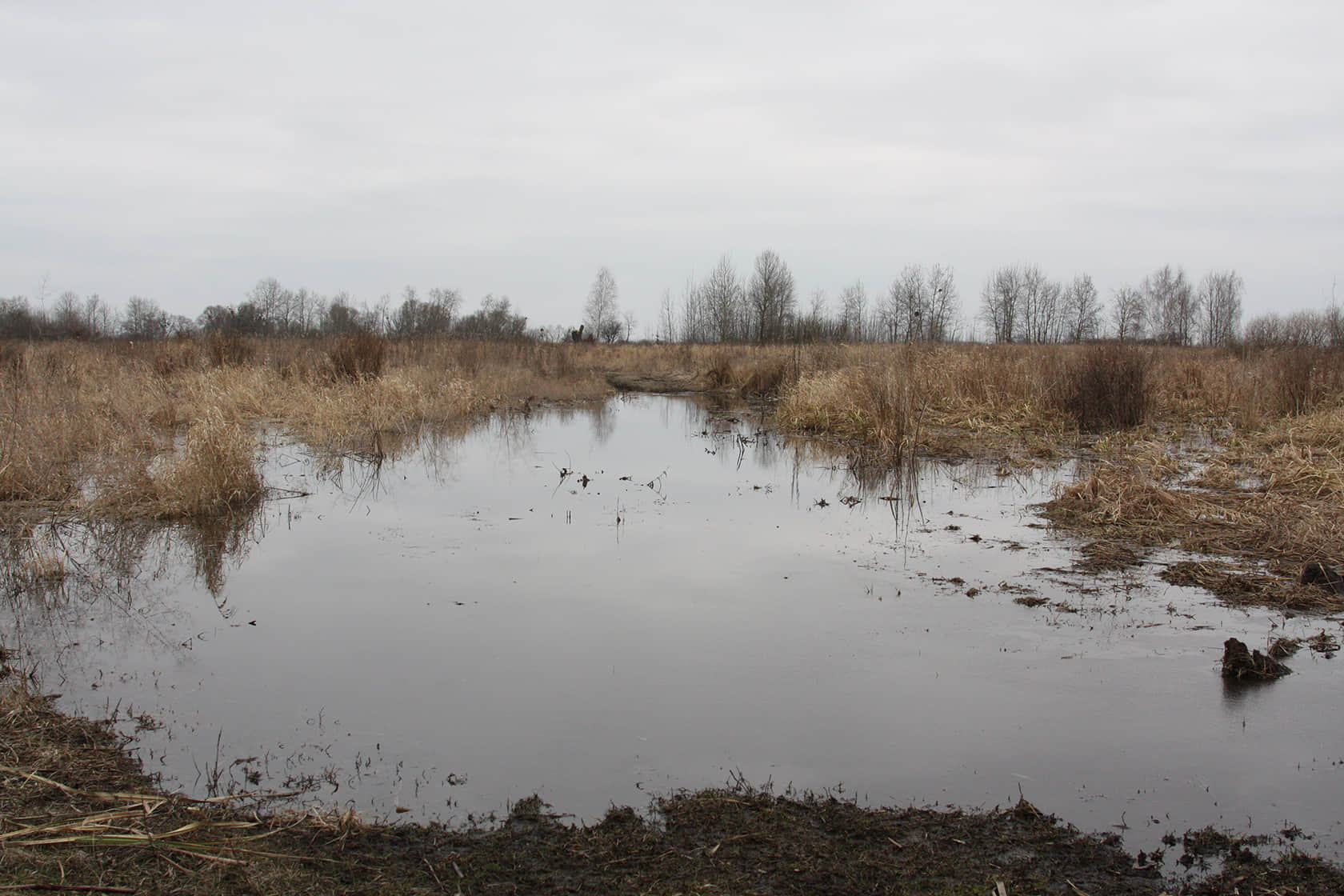
By the way, the water in the local lakes is very clean. Although they are politically within Kyiv, they sit on the outskirts of the city, meaning that the anthropogenic pressure - the scientific term for the level of human disturbance - upon them is relatively low.
And there is also virtually no rubbish, at least in the area we toured with the activists. This isn’t too surprising, as ordinary people with their "gastronomic and cultural needs" usually don’t stray that far from the beaten path, but stay closer to "civilisation". And people seeking exercise and wildlife enthusiasts know better than to litter in their favorite places.
Protected areas
Some parts of the Osokorkivska floodplain have already "gotten lucky", legally speaking. In 2019, the Kyiv City Council designated certain areas as the Osokorkivsky Luky and Tyahle Lake "Landscape Reserves of Local Importance". Legally, development of such areas is forbidden, but in reality, it is not uncommon for this law to be flouted, nor for the perpetrators to escape justice. The Stolitsa Group is already developing part of the territory, and has plans to build dozens of multi-storey buildings. Litigation over the status of other plots of land within the protected area is ongoing, potentially making them fair game for development into residential neighbourhoods too if the courts rule in the owners’ favour.
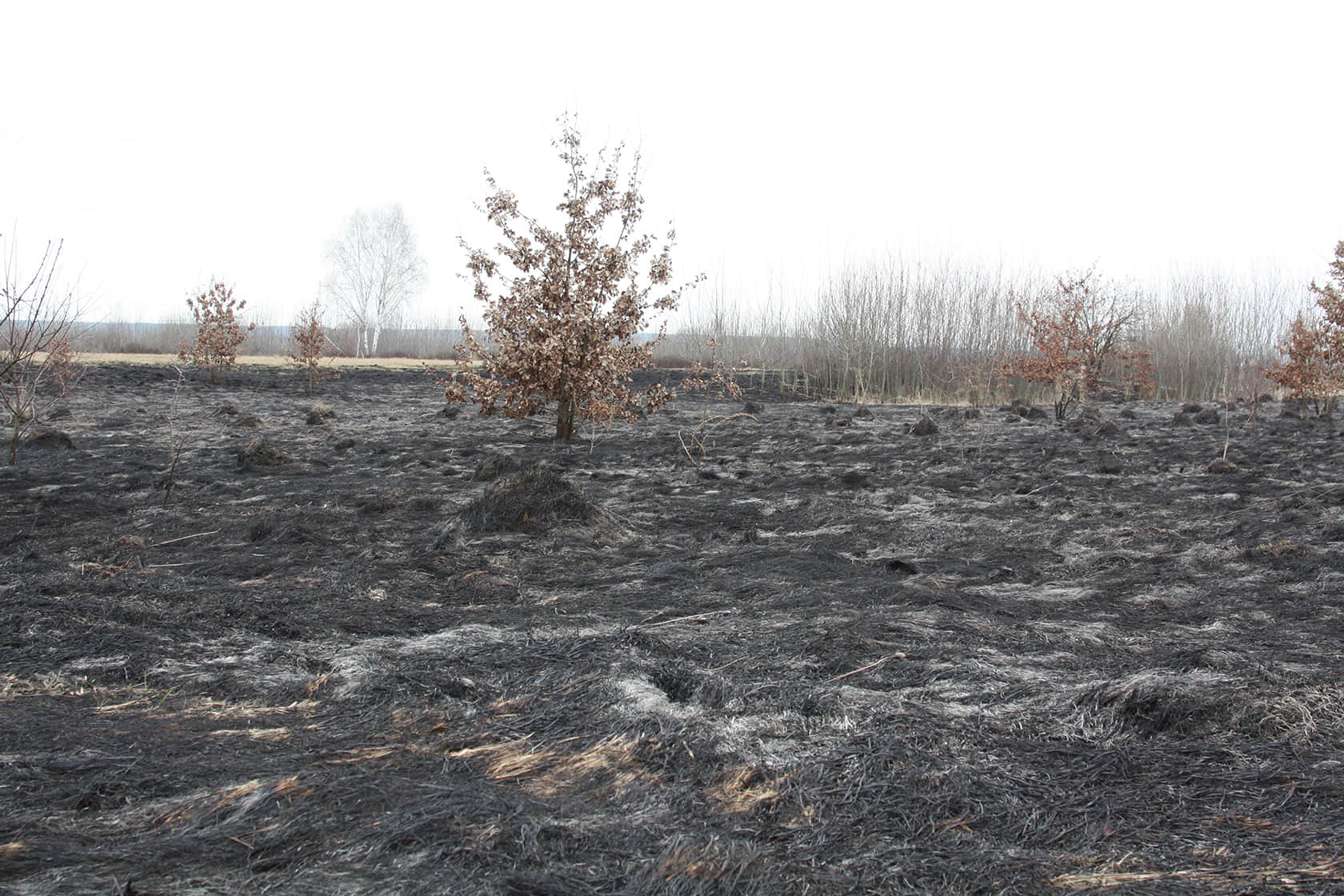
It should be understood that in order to build on these floodplain ecosystems, the surface must first be raised - a several-metre-high layer of sand must be poured. It is obvious that no plant or animal, regardless of whether it is on the Red List or not, will survive here - unless invasive species are finally made to feel at home by the construction and move in.
The water in lakes near residential areas will definitely not be as clean, and their biodiversity will certainly suffer. Birds that need wetlands and meadows will also disappear.
That is why activists are fighting to create a regional landscape park in these places - the officially-designated Osokorky Ecopark, which should encompass existing nature reserves and the surrounding areas. Of course, this is being done not only for the sake of nature itself, but also for the people who depend on it.
A fate worse than fire
As for the consequences of the recent fire, activists and scientists are divided. Whilst some say that it may even be beneficial, others insist that there is no silver lining to this cloud.
Maybe both sides are right in different contexts, as two different ecosystems fell victim to the blaze. And there is always the potential for an unlucky wanderer to be caught in a grass fire and lose their life, no matter what benefits it may provide the ecosystem.
Activists are naturally assuming that the fire was a boon to developers, who can now argue that since the plots of land they seek to develop are no longer home to undamaged nature anyway, the courts should rule in their favour.
What we know for sure is as follows: it is fortunate that the fire happened when it did, in early March, and not later. And it is extremely unlikely that whoever started it had the health of the ecosystem in mind and was trying to conduct their own unauthorised controlled burn.
Sooner or later, nature will reclaim the ten hectares that were affected by the fire, and humans can hardly do anything to speed up the process. But they can certainly stop the process in its tracks by paving the whole area over with concrete.
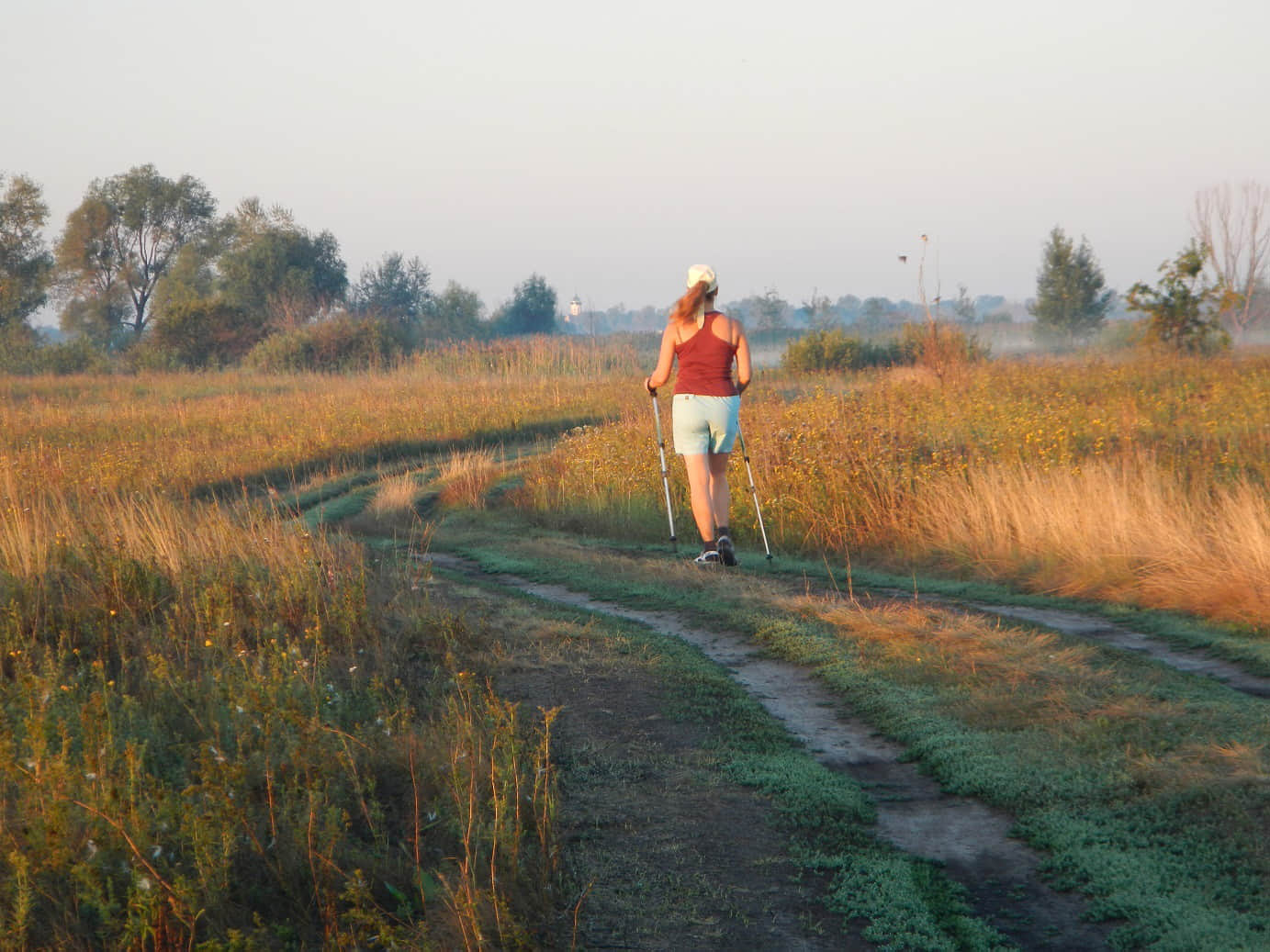
* * *
"Now I understand that a few weeks ago my wife and I settled on the 19th floor near the garden, where the falcons built their nest. We are still living here with their permission," Oleg Malchenko said in one of his next posts, "We like it and are not going to leave yet. We are trying to be inconspicuous and not to make any noise."
Soon, two more eggs appeared in the nest, and then the chicks hatched. The couple watched the falcon family grow, the chicks being fed with meat, and during an air raid warning, thought to themselves "What will happen to the birds if the apartment gets blown up?"

Through open windows, the falcons are used to entering human homes and making themselves at home, overturning flower pots and pulling threads from decorative pillows, or loudly sharing their prey in the meadows.
One of the weakest birds had to be taken to a bird shelter to save its life. Another one died unexpectedly. In the end, the birds flew away to live their lives.
"You might call it surreal to see a little baby creature that will grow up to be able to grab a piece of meat from your palm whilst flying past at 40km/h without you even feeling it! Indeed, it is a bit ridiculous. But in recent months, we have spent so much mental energy observing, communicating, experiencing, protecting and living together with these amazing birds that we cannot help but consider them part of the family."
Dmytro Simonov, UP
Edited by Ben McBride